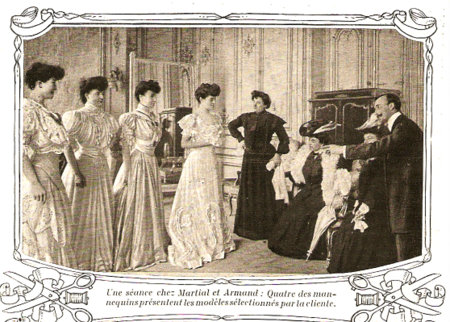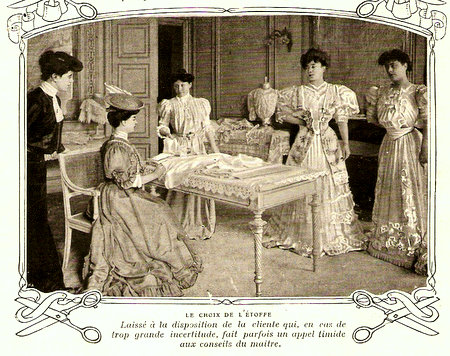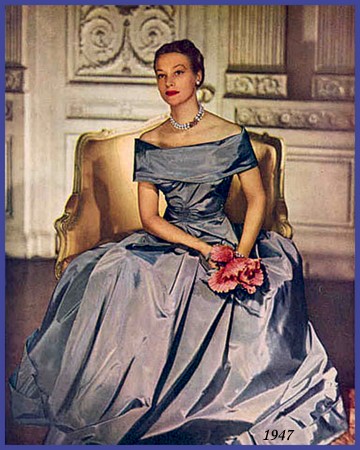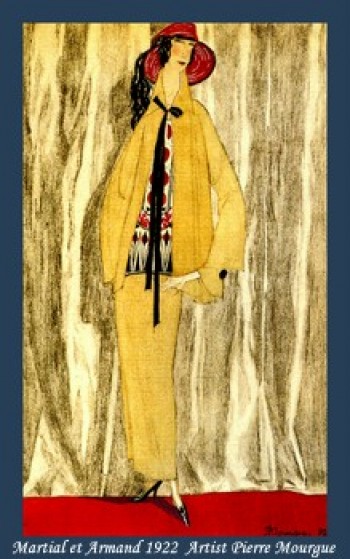Martial et Armand ~ 1884-1960

Biography of Martial et Armand, fashion designer  The only full length photo found of both Martial et Armand presumably his wife shows a grand master at work with his model. Stunning rare detail 1906. Lady X was acting in the role of Carmen in the Paris Theatre.
The only full length photo found of both Martial et Armand presumably his wife shows a grand master at work with his model. Stunning rare detail 1906. Lady X was acting in the role of Carmen in the Paris Theatre.
Articles written were exact in their descripitions of the grand fashion designers of the day, and one such heading was aptly named “Les Temples de L’Elegance”. The first paragraph interestingly read: Les createurs de cette magique: La mode de Paris, sont peu mal connus. Le grand couturier dont etre un artist double d’un administrateur. Les etapes d’une eobe. Les gains de certaines maisons sont formidable. Le budget d’un grand couturier et celui de Mimi Pinson. Martial et Armand are prominent in the article among other great designers and shows some rare photographs dated 1906. Even the financial aspects are given regarding the actual running of the establishments. Costings of the dresses to the clients are given and also how politically important these businesses were to the Govenment of France. The French text in the following article anout this, is not translated:- Fashion House Costings. …….. The following photos show the work room for the construction of the gowns and consultations with the clients concerning the elaborate finishings they required. They were taken in the elegant residence of the Maison at Place de Vendome, it had many different separate grand rooms for his vast works.

Martial et Armand 1906

Early in the 1900’s Pauline Trigere the French born fashion designer commenced her training with Martial et Armand as a trainee cutter.in the Place Vendome Paris. In 1937 she moved to New York.
1909 Latest photo found and added 29 June 2014. Martial did active service in the French Army during the first world war. However he left the army and commenced his business. He had a spring collection in 1916. Exhititions of Martial et Armand fashions reached the U.S.A. It is not known if he actually travelled to America , but on the 7th October 1917, it was reported by the New York Times that the fashion emphasis was ” The Important Collar”. This article covers the use of fur in many designs. Personally I have thought not to include this in my page because of the horrendous impact upon animals during these times. For the record and to remind us of these practices here is the unedited article . “Otter and nutria are furs used lavishly by Martial et Armand. The big collar is favoured, and a greater number of coat suits are exhibited here than elsewhere. Nearly all the suits are garnished in fur, the skirts are short and scant in fullness, and the jacket is long enough to be a redingote. Marmot was the fur that trimmed on suit of hunter’s green cloth. The afternoon frocks seemed often to be two tiered, a tight skirt, with panels that fanned the figure as it moved. The skirts are often plaited, but the plaits open as the wearer moves, for although lines are long, none of them are stiff. The collar plays an important part on tailored suits with Martial et Armand. It may be a flap of a scarf: it may be only the extension of the neck line, but no matter what the cut, the eye is attracted to the collar, and the effect is good. One black cloth afternoon costume had no other garnish than a short vest of bleached rabbit and a scarf of the fur that formed a sort of stiff cravat and hung over the shoulder.” 1917 New York reports: ” Some of the best examples of gowns at Martial et Armand are combinations of black and white. Not black touched stingily in white or vice versa, but a kind of half and half game and the commingling is delightful. Entire accordion plaited panels are in white voile, for instance, or sleeves are in white or black when the foundation is opposing.There are sashes in white or black, also pieces draped to form panniers or baskets at the sides of skirts. White satin is not used so much with black as during the winter. When white is used with satin or satalga, it is more than apt to be of voile.The voile sleeve is the same or a contrasting shade is favoured at Martial et Armand’s if the gown is elaborate. Such a sleeve is not put in tailor-mades, but the chemise gowns or loose slips have the transparent sleeve, and if one layer of the frail material proves too thin two layers are inserted and the softness is increased. Skirts are a little longer than formerly, and the designer is generous in jacket, waist, and bodice. The balloon skirt does not find great favour here. The emphasis is placed on the skirt that is straight and simple. The house employs much sack cloth, a new fabric that is as coarse as drugget. It is made into elaborate frocks with splashes of Rumanian embroidery. I saw this sack cloth there in almost all tones save black and kindred dark colours. A gown of it in beige had a vivid green crocheted belt, and to coarse things together rendered an effect that was dashing and striking. Another bure gown was in the brightest shade of brick or copper. A fabric that is softer than the real bure is one interwoven with wool and called tricot bure. Suits of it are very stylish. Besides satin voile and bure of two kinds, Martial et Armand use covert cloth, jersey, serge, and gabardine. In colours, mastic, navy, king blue, brick, beige, sand, lead, with combinations in black and white. Big flapping pockets are a feature for coats and sometimes afternoon frocks. The pockets are picked up out of the foundation and relieve the sharp angles. This house employs fine plaits in great abundance for plain suits and those for afternoon hours”. 1922 A plain straight suit shown in Gazette Bon Ton. Perfumes launched by Martial et Armand began in 1924 with Une Rien, and Gardenia. Followed by: 1925 Mon Reve, 1926 Ambre, Chypre, and Place Vendome, 1928 Chez Martial et Armand and 1930 Presence.
Perfumes launched by Martial et Armand began in 1924 with Une Rien, and Gardenia. Followed by: 1925 Mon Reve, 1926 Ambre, Chypre, and Place Vendome, 1928 Chez Martial et Armand and 1930 Presence.


